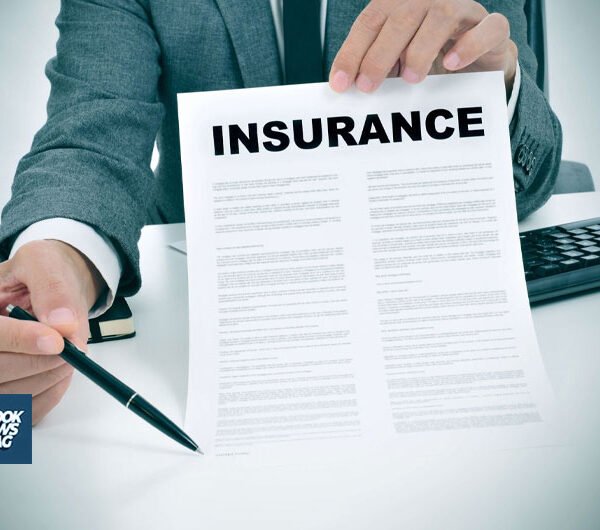What are Your Insurance Needs as a Beauty Salon Business?
Operating a beauty salon comes with its fair share of risks and liabilities. From minor mishaps like accidental hair dye stains to more serious incidents involving customer injuries, salons face a range of hazards daily. Having adequate insurance coverage is crucial for protecting your business – without it, a single incident could result in substantial losses or even bankruptcy.
In this comprehensive guide, we’ll explore the key types of insurance policies beauty salons need, outline important legal and regulatory requirements, and provide actionable tips for choosing the right insurance partner. Whether you’re just starting or looking to reassess your existing coverage, read on for expert advice tailored to your industry’s unique needs.
Types of Insurance Coverage for Beauty Salons
The foundation of any beauty salon’s risk management strategy is insurance. While no single policy can fully prevent any incidents, having coverage across these key areas will safeguard your business on multiple fronts.
General Liability Insurance
This broad form of insurance helps cover costs if a third party sues your salon for bodily injury or property damage that occurs on your premises. For example, if a customer trips over a loose cord, falls, and suffers injuries – general liability insurance could pay for their medical bills as well as any potential legal judgments. It also protects in scenarios like accidental hair dye stains on clothing.
Policy limits generally start at $1 million, with higher coverage amounts available. Be sure to choose adequate limits to match the value of your business assets and the volume of daily customers.
Professional Liability Insurance
Also referred to as errors and omissions insurance, this type of policy pays legal fees and judgments that arise from professional service-related incidents. For salons, a common claim would involve a botched haircut, hair damage from bleach, or failed coloring attempts. Having coverage here is especially important as social media makes it easy for unhappy customers to share complaints publicly.
Professional liability insurance also helps fund legal defense fees if you need to respond to licensing board complaints or allegations of misconduct.
Property Insurance
From hair styling stations to expensive hair care products, salons have significant investments in physical property and inventory. Property insurance helps pay repair or replacement costs if assets are damaged or destroyed due to covered incidents like fires, weather events, vandalism, and theft. Make sure to insure equipment at replacement value rather than just the depreciated cost.
Business interruption insurance can also be added on to cover income losses if damage forces temporary closure.
Workers’ Compensation
In nearly every state, businesses with employees must carry workers’ compensation insurance. This mandatory coverage helps pay medical expenses and lost wages if staff suffer job-related illnesses or injuries. For salons, common claims involve chemical burns, strained muscles, and falls.
Having adequate workers’ compensation coverage protects employees and also minimizes lawsuits. Fines for non-compliance can be steep as well.
Legal & Regulatory Insurance Requirements
In addition to choosing adequate coverage, beauty salon owners must understand various legal and regulatory obligations involving insurance:
State-Specific Requirements
Most states mandate that beauty salons carry certain types and minimums of insurance, such as workers’ compensation. Requirements vary significantly – New York may have different minimums compared to California, for example. Failure to comply can result in penalties.
Be sure to review your own state’s specific regulations applicable to the beauty industry. State cosmetology boards and insurance commissioners post this information online. Local insurance agents can also outline mandatory coverage.
Leasing Contracts
If you rent space in a strip mall or office building, check the property lease for any insurance requirements. The landlord may mandate being named as an additional insured on certain policies. Provide updated insurance documentation whenever policies renew.
City Business Licenses
Most cities and counties require business owners to carry general liability coverage and workers’ compensation to qualify for a municipal business license. Insurance minimums and license renewal processes differ between locations.
OSHA Requirements
For salon owners with employees, Occupational Safety and Health Administration (OSHA) regulations related to worker safety and hazard communication may impact insurance needs. Stay compliant with standards around proper chemical storage, ventilation, protective gear, and more.
Factors that Influence Beauty Salon Insurance Needs
An experienced insurance agent will tell you that there’s no one-size-fits-all approach to salon coverage. The specific risks and optimal insurance mix vary based on:
Services Offered
A hair salon focused exclusively on cuts and styling requires a different risk management strategy compared to a full-service spa offering skin treatments, waxing, nails, and more intense chemical processes. The broader the services, the greater the need for robust insurance coverage.
Number of Staff
More employees means increased exposure in areas like workers’ compensation claims and liability incidents. Larger staff size often necessitates higher insurance policy limits.
Size & Layout
A compact 600-square-foot salon with two hair stations has fewer property risks compared to a 3,000-square-foot luxury spa with expensive furnishings. Assess coverage needs based on the value of facilities, equipment, and inventory. Also, consider layout – slick surfaces or narrow corridors increase slip-and-fall hazards.
Location & Foot Traffic
A downtown salon seeing hundreds of customers per week needs higher liability limits compared to a neighborhood shop with lower traffic. High foot traffic raises the likelihood of incidents. The location also impacts property risks – salons in storm-prone coastal areas need robust coverage.
Years in Business
Long-standing salons with solid safety track records generally qualify for lower insurance rates compared to new startups, which insurers view as higher risk. Maintaining rigorous standards around risk management is key for keeping premiums in check even as your business matures.
How to Choose the Right Insurance Provider
Don’t just go with the first insurance provider you find on Google. As a salon owner, it pays to find an experienced agent that offers tailored coverage options for beauty industry clients. Here are the top tips for choosing an insurance partner:
Specialized Expertise
Look for providers that specifically market services to salons, spas, and cosmetology businesses in your state. They will be most familiar with industry trends, common claims scenarios, and ever-evolving regulations. A generalized agent may not offer the same level of targeted advice.
Policy Customization
Avoid carriers that only sell pre-packaged, one-size-fits-all policies. Every salon has unique risks based on services, size, location, and other factors. Find a provider that offers flexibility – with the ability to add specialty endorsements as needed – to match coverage dollar limits with your specific requirements.
Premium Discounts
Many insurers offer discounts for bundle policies, paying annually versus monthly, maintaining robust safety protocols, associations with trade groups, and more. An experienced broker will explain available discounts to help you minimize premiums.
Client Testimonials
Don’t decide purely based on a website blurb. Reach out to the agent’s current beauty industry clients to understand if they have a track record of offering valuable advice, resolving claims promptly, and providing ongoing support. Check reviews on sites like Google and Yelp as well.
Benefits of Insurance for Your Beauty Salon Business
- Property Protection: Beauty salon insurance typically includes coverage for property damage or loss due to events like fire, theft, vandalism, or natural disasters. It helps cover the cost of repairing or replacing salon equipment, furniture, supplies, and other physical assets.
- Liability Coverage: Beauty salons are exposed to potential liability claims. For example, if a client slips and falls in the salon, or if a customer suffers an allergic reaction to a product or treatment, the salon owner may be held responsible. Liability insurance provides coverage for legal expenses, medical costs, and potential settlements or judgments.
- Professional Liability Coverage: Also known as malpractice or errors and omissions insurance, professional liability coverage is essential for beauty salon businesses. It protects salon owners and employees against claims of negligence, errors, or mistakes in providing beauty treatments or services.
- Business Interruption Coverage: If your salon is temporarily unable to operate due to a covered event, such as a fire or natural disaster, business interruption coverage can compensate for lost income during the downtime. It helps cover ongoing expenses like rent, salaries, and utilities while the salon is closed.
- Worker’s Compensation: If you have employees, worker’s compensation insurance is typically required by law in most jurisdictions. It provides coverage for medical expenses and lost wages if an employee is injured or becomes ill while working. It helps protect both the employee and the salon owner from financial burdens.
- Product Liability Coverage: Beauty salons often sell or use various beauty products. Product liability insurance protects against claims arising from injuries or damages caused by a product sold or used in the salon. It covers legal costs, medical expenses, and potential settlements.
- Theft and Crime Coverage: Beauty salon insurance can include coverage for theft of cash, equipment, or supplies, as well as employee dishonesty or fraud. This helps safeguard the salon’s assets and finances.
- Personal Injury Coverage: Personal injury coverage protects against claims of defamation, slander, or invasion of privacy. If a client alleges that the salon or its employees have caused harm through false statements or violation of privacy rights, this coverage can help with legal expenses and potential settlements.
Conclusion
Operating a salon comes with an array of risks – from chemical mishaps and client lawsuits to high-cost building damage and employee injuries. Remaining underinsured leaves your business financially vulnerable. At the same time, overinsuring wastes premium dollars.
We encourage salon owners to carefully complete risk assessments looking at all facets of their individual business and local market when evaluating insurance needs. Compare this to state regulations, local lease rules, and other requirements as well.
Most importantly, seek guidance from specialty insurance brokers with proven experience protecting beauty industry clients. They can provide invaluable direction to make sure you have adequate safeguards without overspending on excessive policies. Investing time upfront to create a sound risk management strategy pays major dividends down the road.
FAQs
Q1: How much general liability insurance should a salon have?
For most small to mid-sized salons, $1 million in general liability coverage is adequate. Larger operations may require higher limits of $2 million or beyond. Discuss your specific risks with an insurance broker.
Q2: Should salons have professional liability insurance?
Yes – this coverage is vital even if your state does not mandate it. Lawsuits related to service errors (like hair damage) are common. Professional liability insurance protects your finances.
Q3: Does a salon need workers comp insurance?
If you have any W2 employees, workers’ compensation is legally required in nearly every state. Fines for non-compliance are steep. Independent contractors can provide their coverage.
Q4: How much business interruption insurance should I get?
There is no set amount for this optional coverage – limits depend on your fixed costs and profitability. Work with your accountant to estimate lost revenues from a prolonged closure. Insure enough to remain viable.








